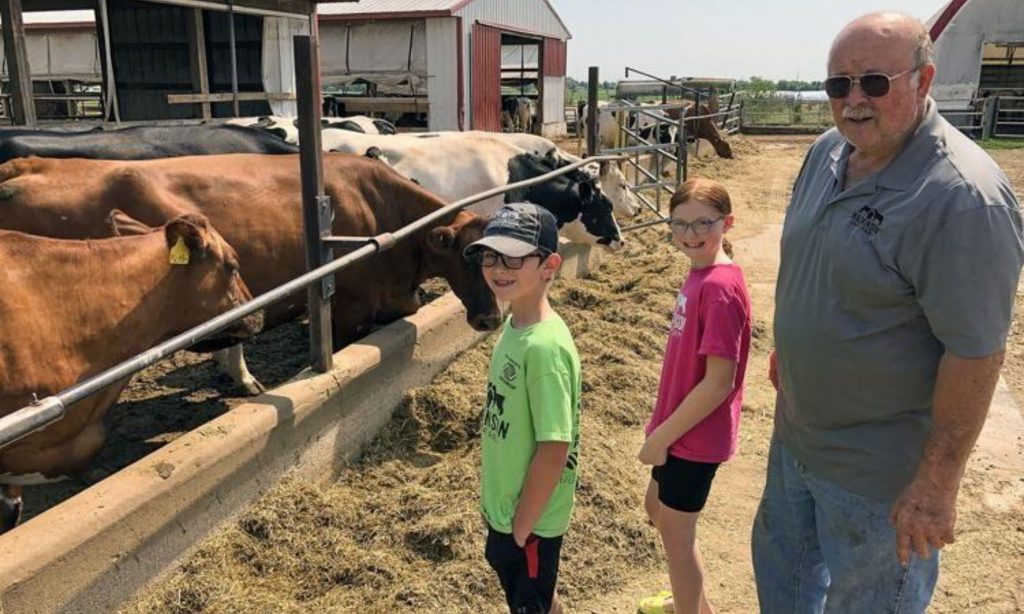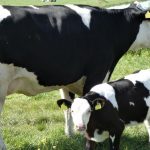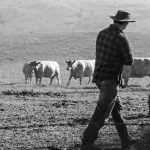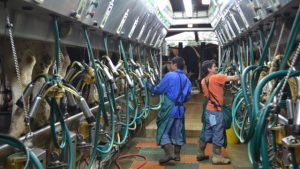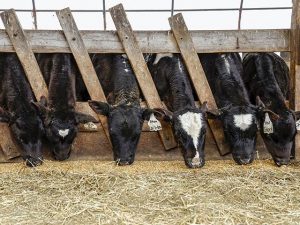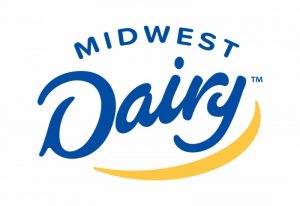
As long as the glass contains milk, he’s pretty happy about the situation either way.
Mackinson, president of the Illinois Milk Producers Association, discussed the rich history of his family farm and outlook for the dairy industry as it celebrates June Dairy Month.
“Overall, prices like just about everything else (in commodity agriculture) have come down, but milk production is still up,” Mackinson said. “However, with the warmer weather, we’ll probably see a drop (in milk output). The cows like cooler weather better than they like hot weather. So, we make sure to keep the cows cool and comfortable.”
Mackinson farms with his wife, Rita, brother, Roy, son Matt — who runs the operation — and daughter, Mary Faber. Mary’s husband, Jesse Faber, is the ag teacher at Pontiac High School while Matt’s wife, Amy, works as a nurse at the local hospital.
The Mackinsons use a sprinkler system and fans to keep their herd comfortable. They milk about 140 cows two times per day.
All the milk from the historic dairy, founded near the end of the Civil War in 1865, goes to Prairie Farms Dairy.
“We started shipping milk to Prairie Farms in the late-1960s,” Mackinson said. “Dad saw a good market back then.”
The milk market has tanked a bit this year. USDA’s latest price estimates of $17.75 per hundredweight for Class III milk, $18.30 for Class IV and $20.50 for all milk are down between $4.21 and $6.17 compared to last year.
“Like other livestock industries, dairy producers are in a bit of a tight spot,” said Tasha Bunting, IMPA manager. “Milk prices are definitely trending down and putting pressure on our producers. It’s definitely recognized in the number of dairies we’ve seen exiting the industry and the number of cows on farms continues to decline as well.”
The number of dairy cows in Illinois slipped from 84,000 in 2021 to 79,000 as of Jan. 1, 2023, according to the National Agricultural Statistics Service.
“There’s five of us (dairies) left here in Livingston County,” Mackinson said. “When you look at the number of farms, it’s dropped to around 400 herds (statewide) now, but our production and everything else is staying around the same.”
The Mackinsons maximize their milk production with top genetics, by producing their own feed and through the use of technology to track herd health and output.
They also produce enough corn and soybeans to not only meet their herd’s feed needs, but to sell commercially to diversify their operation.
As for his role as the IMPA leader, Mackinson said it’s all about building relationships to promote milk.
“We’re trying to keep people aware of what we’re doing with checkoff money (to invest in the industry) and of what a great product we have,” he said.
Mackinson, who has been farming for nearly 50 years, said he still enjoys operating a dairy, despite the long hours. And he’s really looking forward to seeing the next generation take over.
“A job isn’t work if you’re having fun,” he said.
The Mackinsons have six grandchildren — Isaac, Brooke, Evan and Cameron Mackinson and Ava and Eli Faber.
“I’ve got six grandkids within two miles,” Mackinson said. “The four oldest would probably be here (at the dairy) 24/7 if it wasn’t for school and other activities. The two younger ones aren’t quite old enough yet.”
And they’re all quickly learning about dairy farming.
“Isaac (9-years-old) knows more of the cows’ names without looking at their tags than I do,” Mackinson added. “I’m proud of that.”
Statewide, the top five counties with the most milk cows as of Jan. 1, 2023 are:
• Clinton, 11,500.
• Stephenson, 10,400.
• Washington, 6,200.
• Jo Daviess, 4,000.
• McLean, 3,900.
